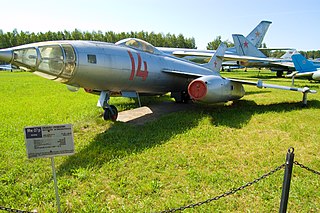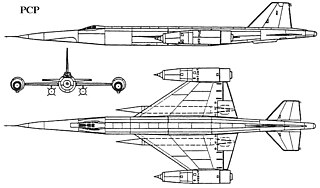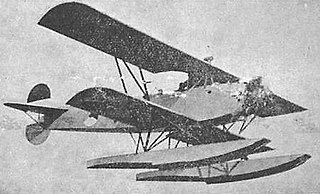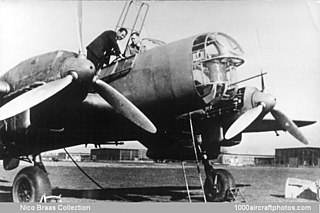| Romano R.4 | |
|---|---|
 | |
| Role | Reconnaissance flying boat |
| National origin | France |
| Manufacturer | Chantiers aéronavals Étienne Romano |
| First flight | 1927 |
| Number built | 1 |

The Romano R.4 was a French biplane reconnaissance floatplane built in 1927.
| Romano R.4 | |
|---|---|
 | |
| Role | Reconnaissance flying boat |
| National origin | France |
| Manufacturer | Chantiers aéronavals Étienne Romano |
| First flight | 1927 |
| Number built | 1 |

The Romano R.4 was a French biplane reconnaissance floatplane built in 1927.
Data from [1]
General characteristics
Performance

The Alliant RQ-6 Outrider unmanned aerial vehicle (UAV) was designed to provide near-real-time reconnaissance, surveillance, and target acquisition information to United States Marine Corps air/ground task forces, United States Army brigades, and deployed United States Navy units that was small enough for an entire system to be contained on two Humvees and trailer and transported on a single C-130 Hercules cargo aircraft.

The Mikoyan-Gurevich MiG-25 is a supersonic interceptor and reconnaissance aircraft that is among the fastest military aircraft to enter service. Designed by the Soviet Union's Mikoyan-Gurevich bureau, it is an aircraft built primarily using stainless steel. It was to be the last plane designed by Mikhail Gurevich, before his retirement.

The Sukhoi Su-2 was a Soviet reconnaissance and light bomber aircraft used in the early stages of World War II. It was the first airplane designed by Pavel Sukhoi. The basic design received an engine and armament upgrade (Su-4) and was modified for the ground-attack role (ShB).

The Mitsubishi F1M was a Japanese reconnaissance floatplane of World War II. It was the last biplane type of the Imperial Japanese Navy, with 944 built between 1936 and 1944. The Navy designation was "Type Zero Observation Seaplane" (零式水上観測機).

The Yakovlev Yak-27 was a family of Soviet supersonic aircraft developed in 1958 from the Yak-121 prototype. The most built variant was the tactical reconnaissance Yak-27R.

The Tupolev ANT-7, known by the VVS as the Tupolev R-6, was a reconnaissance aircraft and escort fighter of the Soviet Union. The R-6 traces its roots back to early 1928 when the Soviet Air Force needed a long-range multirole aircraft. The requirements were that it could be used for long-range transport, defensive patrolling, reconnaissance, light bombing and torpedo attack.

The Yakovlev Yak-2 was a short-range Soviet light bomber/reconnaissance aircraft used during World War II. It was produced in small numbers, and most of them were destroyed during the opening stages of Operation Barbarossa.

The Heinkel He 116 was an extremely long-range mail plane designed to deliver airmail between Germany and Japan. Several examples were built for this role, as well as a small batch to be used in the long-range reconnaissance role.

The Tsybin RSR was a Soviet design for an advanced, long-range, Mach 3 strategic reconnaissance aircraft.

The Caudron R.4 was a French World War I twin-engine biplane reconnaissance/artillery cooperation aircraft and the progenitor of a series of successful aircraft that filled a variety of roles with the French Aéronautique Militaire.

The Fokker C.VII-W was a reconnaissance seaplane built in the Netherlands in the late 1920s. Sharing elements of the highly successful C.V design, the C.VII-W was a conventional, single-bay biplane with wings of unequal span braced with N-struts. The undercarriage consisted of a standard twin-pontoon arrangement, and the fin and rudder continued through to the ventral side of the fuselage, creating a cruciform tail. The pilot and observer sat in tandem, open cockpits. The wing structure was wooden with fabric and plywood covering, and the fuselage was of steel tube construction with fabric covering.

The Aichi E3A was a reconnaissance seaplane developed in Germany as the Heinkel HD 56 to operate from warships of the Imperial Japanese Navy, which designated it the Type 90-1 Reconnaissance Seaplane. It was a conventional single-bay biplane with staggered wings braced by N-type interplane struts. The pilot and gunner sat in tandem, open cockpits.

The Levasseur PL.10 was a carrier-based reconnaissance aircraft developed in France in the late 1920s. It was a conventional, single-bay biplane along similar lines to Levasseur's contemporary designs for the French navy, including a watertight, boat-shaped fuselage, small underwing floats, and undercarriage that could be jettisoned in flight in order to improve the changes of a successful ditching.

The Messerschmitt Bf 161 was a 1930s prototype German reconnaissance aircraft.
The Dewoitine D.750 was a prototype French twin-engined torpedo bomber. It was designed prior to the outbreak of the Second World War to operate from the aircraft carriers of the French Navy, but only a single example was completed, with development ended by France's defeat by Germany in June 1940.
RWD 22 was a Polish twin-engine torpedo bomber and naval reconnaissance floatplane design. Developed by Leszek Dulęba and Andrzej Anczutin of Doświadczalne Warsztaty Lotnicze in 1939, the project was to be developed under the brand of the RWD design bureau. The outbreak of World War II interrupted the design and it never left the planning stage.
The Romano R.16 was a three engine, high wing monoplane designed for policing and other rôles in France's African colonies.
The Romano R.5 was a French reconnaissance flying boat built in 1932. It had a parasol wing, a single engine and hull stabilizing sponsons. Only one was built.
The Romano R.3 was a French experimental seaplane built by Romano in the 1920s. It featured a biplane layout.